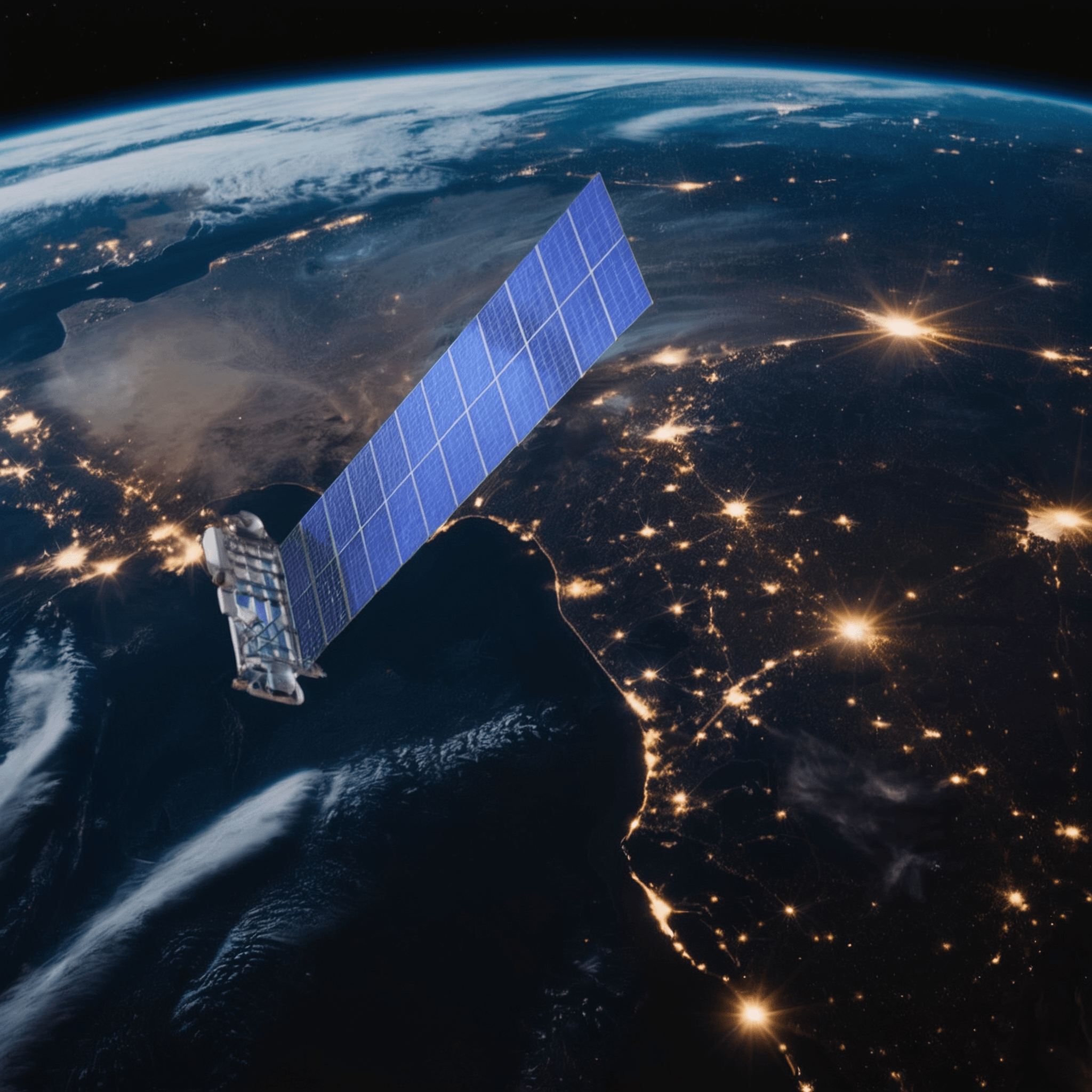· deep dive · 4 min read
Starlink Satellites Dominate Earth's Orbit
SpaceX's Starlink constellation has grown at an astonishing rate, now accounting for over 20% of all trackable objects in orbit. With plans for tens of thousands more, Starlink is on the cusp of forever changing the landscape of Earth's near-space environment.

The Rise of Starlink
In the span of just a few years, SpaceX’s Starlink satellite internet constellation has gone from an ambitious concept to a dominant presence in low Earth orbit (LEO). As of April 8, 2024, a staggering 5,765 Starlink satellites are actively operating, with a total of 5,698 in orbit. The company has launched 6,166 Starlinks to date, with plans for tens of thousands more in the coming years.
The sheer scale of the Starlink constellation is difficult to comprehend. Consider this: the 5,765 active Starlinks represent over 20% of all trackable objects currently in orbit around Earth and just under half of all payloads. In fact, Starlinks now outnumber all other active satellites combined.
This explosive growth has been enabled by SpaceX’s unprecedented launch cadence. Leveraging its reusable Falcon 9 rocket, the company has been conducting regular dedicated Starlink launches, each carrying 60 or more satellites. In 2023 alone, SpaceX launched over 2,000 Starlinks, averaging a launch every five days.

A Mega-Constellation Among Mega-Constellations
While Starlink is the most prominent mega-constellation, it is far from the only one. Several other companies, including Amazon’s Project Kuiper, OneWeb, and Telesat, have plans for their own massive LEO broadband constellations. However, none have yet reached the scale of Starlink.
As of April 2024, the breakdown of the major LEO broadband constellations is as follows:
- Starlink: 5,765 active satellites
- OneWeb: 648 satellites launched, aiming for an initial constellation of 648
- Project Kuiper: No satellites launched yet, but plans for a constellation of 3,236 satellites
- Telesat Lightspeed: No satellites launched yet, but plans for a constellation of 298 satellites
While these other constellations are significant in their own right, they are dwarfed by the sheer size of Starlink. If all these constellations reach their planned scale, LEO will be packed with an unprecedented number of satellites, fundamentally changing the nature of the near-Earth space environment.

Starlink’s Impact on the Orbital Environment
The rapid proliferation of Starlink satellites has not been without controversy. Astronomers have raised concerns about the impact of large constellations on ground-based observations. Starlinks, particularly shortly after launch, can appear as bright streaks in telescope images, potentially obscuring faint astronomical objects.
In response to these concerns, SpaceX has been working on mitigations, such as applying anti-reflective coatings to the satellites and adjusting their orientation to minimize reflections. However, with tens of thousands of Starlinks planned, it’s unclear if these measures will be sufficient to fully address the astronomical impacts.
Another concern is the increased risk of collisions and the generation of space debris. With so many satellites in LEO, the probability of collisions increases. Each collision has the potential to generate thousands of debris fragments, which could then cause further collisions in a cascading effect known as the Kessler syndrome.
SpaceX has emphasized that Starlink satellites are designed to autonomously avoid collisions and to de-orbit at the end of their operational life to prevent the creation of long-term debris. However, with the sheer number of Starlinks, even a small fraction of satellites failing could significantly contribute to the space junk problem.

The Changing Landscape of LEO
As of April 2024, the U.S. Space Surveillance Network is tracking a total of 28,639 objects in orbit, including active and defunct satellites, spent rocket stages, and debris. With Starlink making up a significant portion of this total, it’s clear that the landscape of LEO is changing rapidly.
The proliferation of mega-constellations like Starlink raises complex questions about the sustainable use of the LEO environment. How many satellites can LEO safely accommodate? What are the long-term impacts on astronomy, space debris, and the safe operation of other satellites? How do we balance the benefits of global broadband coverage with the potential risks?
These are questions that the international space community will need to grapple with in the coming years. As Starlink and other mega-constellations continue to grow, it’s critical that we develop robust international guidelines and regulations for the responsible use of LEO.
The Starlink revolution is well underway, and it’s clear that LEO will never be the same. As we marvel at the technological achievement and the potential benefits of global satellite internet, we must also carefully consider the implications for the long-term sustainability of the space environment. The decisions we make today will shape the future of Earth’s orbits for generations to come.




